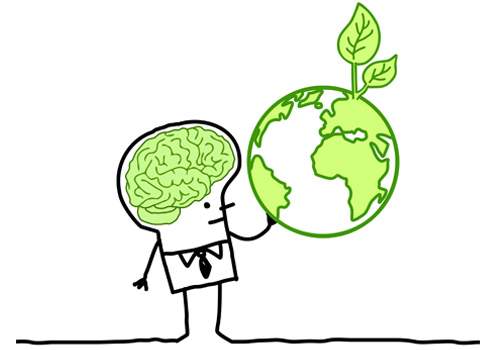Happiness and how to measure and cultivate it seem to be all the rage (pun intended) these days. A debate on the online pages of the Economist examined whether it was a good idea if governments should assess how we are feeling and whether we are living meaningful, satisfying lives. Such subjective measures are meant to accompany traditional metrics of economic activity like Gross National Product. Should these well-being metrics then drive policy-making? Should happiness be privileged over economic growth?
The dichotomy is largely a false one. In general, economic growth spurs human welfare. Increased material prosperity brings with it increased well-being. Most people can only contemplate well-being with a full stomach. Wealthier countries tend to report higher levels of well-being than poorer ones. Wealthier individuals tend to have better physical and mental health than poorer ones. Wealthier individuals have greater choice to contemplate meaning and purpose than people whose access to resources is more restricted. Causes like environmentalism and human rights are generally driven by people who have greater margin in their lives. Even spiritual movements are often the product of people of means. After all it was the affluent who drove interest in “The Upper Middle Path” of contemporary Western Buddhism. Are there routes to well-being beyond material growth and consumption? Absolutely. Research shows that the happiest people have lives rich in loving relationships, stimulating work and spiritual engagement. Before that can happen, however, basic material needs must be satisfied first.
Yet, there is a larger issue that this debate ignores––the structure of economic growth and activity and its relationship to the long-term viability of human welfare. I recently re-watched Ken Burns’ documentary series on America’s National Parks. I was struck at how many of the contemporary debates on environmental preservation versus short-term economic exploitation of natural resources were echoed in the 150-year history of the park system. The progression of time has only amplified the severity of the issue. The preservationists of the nineteenth century fought for the continued existence of decimated species like the buffalo or railed against the prolific use of bird feathers in women’s fashion. However, today’s environmentalists fight for the viability of the planetary eco-system itself.
Underlying this problem is a linear economic model that mindlessly extracts, processes, uses and then discards resources. When a forest or field is used up, the economic machine moves on and leaves garbage behind. On a planet of finite resources, this is not an effective long-term strategy. The issue of whether to measure well-being in a system that undermines ecological viability is an exercise of rearranging the Titanic’s deck chairs.
Long-term well-being (to say nothing of continued human survival) is more assured if we shift the model of economic activity itself. How can people thrive without simultaneously using up resources? Cyclical and regenerative processes, similar to those that operate in nature, where the waste of one process becomes the resource of another are a better long-term proposition. Fortunately, there are successful precedents.
In his book, Just Enough: Lessons in Living Green From Traditional Japan, Azby Brown describes how pre-modern Japan restructured in the face of environmental and social collapse to create a sustainable system that lasted over 250 years. Urban human waste was processed into fertilizer that regenerated soil that in turn produced food. Interdependent recycling systems were developed to reuse resources like textiles and building materials. Communal bathhouses were created to both preserve water resources and encourage a clean, hygienic populous. While not perfect, people were fed and the society was peaceful.
The modern-day equivalent of these closed-loop cycles is professed by architect William McDonough (who was born in Japan and recalls childhood memory of the “honey wagon” coming to take their “night soil” to the countryside) and his notion of “Cradle-to-Cradle” design. McDonough envisions a time when we will turn our products back to their manufacturer who will then disassemble the component parts and transform them into something else. He has already successfully adapted this system with a carpet maker which will recycle your old carpet into something new. Furniture makers are getting on board as well. In fact, the chair I’m sitting while writing this is designed to be completely recyclable. We have the ability to restructure our way of life while maintaining quality of life.
We must urgently find new models of creating wealth—and moving people beyond subsistence—that are aligned with natural cycles. This movement is still in its infancy and the goal is a tall order, but it represents hope for a more mindful relationship to the planet we live on and a healthier way of generating both wealth and wellbeing.
Jeremy Hunter, PhD is on the faculty of the Peter F. Drucker School of Management in Claremont, California. His courses The Executive Mind and The Practice of Self-Management adapt mindfulness into practical framework for managers and leaders. Click here to visit his site and here to follow him on Twitter.






